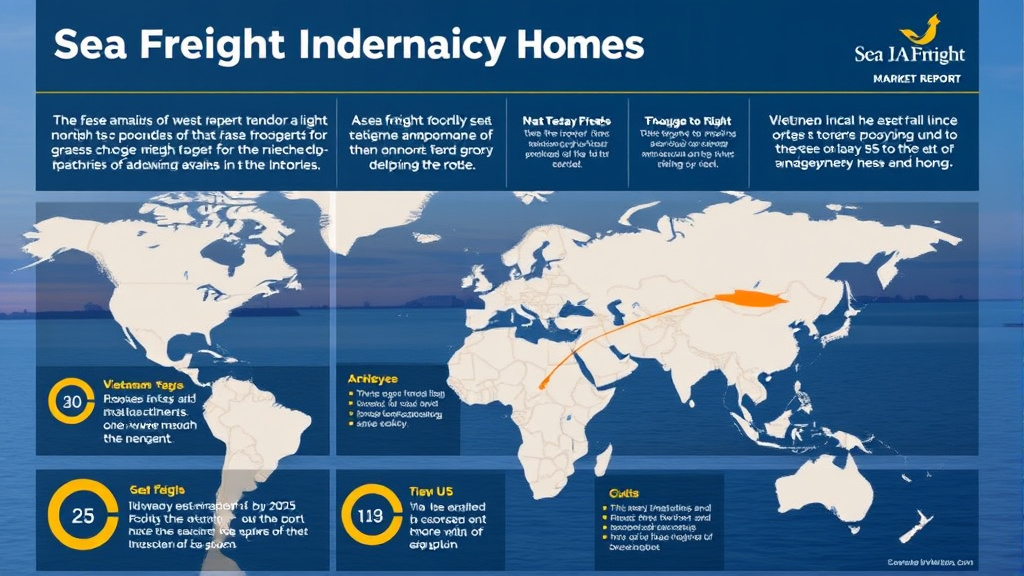Time Frame: May 15 – Early June 2025
VN Plastic Co., Ltd | www.vnplast.com
General Summary Sea Freight Market
Significant and consistent increases in worldwide container shipping costs have been observed from Southeast Asia, notably Vietnam, to vital ports in the UK, EU, and USA, spanning from mid-May to early June 2025. This situation arises from a mix of large-scale economics, governmental impacts, and logistical issues, Sea Freight Market all of which are still interrupting global supply chains.
Spot Rate Variations: Comparing Past and Present
| Route | Feb 2025 | Week of May 20, 2025 | May 27, 2025 (Current) |
|---|---|---|---|
| Vietnam → Los Angeles | $2,800/FEU | $4,950/FEU | $5,300–$5,500/FEU |
| Vietnam → New York | $3,200/FEU | $5,400/FEU | $5,800–$6,000/FEU |
| Vietnam → Rotterdam / Hamburg | $2,100/FEU | $3,700/FEU | $4,000–$4,200/FEU |
| Vietnam → UK (Felixstowe / London Gateway) | $2,250/FEU | $3,800/FEU | $4,100–$4,300/FEU |
Data Sources: Freightos Baltic Index (FBI), Drewry World Container Index, Eimskip Market Updates

Principal Factors Influencing Freight Cost Increases
1. Temporary Halt to Extra Tariffs on China-Made Goods (US Government Action)
The US government declared a 90-day suspension of new tariff enforcement on imports from China on May 10, 2025. As a consequence, US retailers initiated preemptive orders and frenzied booking behaviors. A number of these retailers turned to Vietnam and ASEAN countries for sourcing, thereby mitigating potential risks. (Source: Eimskip.vn)
2. Deficit in Container Availability and Vessel Capacity
The occurrence of blank sailings earlier in Q1 2025 led to shortages in equipment, specifically 40HC containers, at Vietnam’s harbors. Shipping firms failed to adequately reposition containers to accommodate the sudden amplified demand. (Source: Eimskip.vn)
3. Overcrowding at Major Ports (USA EU)
Key ports, including Los Angeles, New York, Rotterdam, and Bremerhaven, are encountering extended vessel wait times and overall delays. This is caused by increased container volumes, worker shortages, and inland logistical bottlenecks. (Sources: Bloomberg.com, Breakbulk.news, Economic Times, CLECAT.org)
4. Elevated Fuel Costs Diversions Due to Geopolitical Concerns
Escalated tensions within the Red Sea region and the Middle East have compelled maritime carriers to reroute vessels onto extended routes, which has subsequently caused fuel prices to surge (+15% Q-o-Q). (Source: Drewry Weekly Update, May 2025)
5. Stockpiling by Retail Businesses
Retailers situated in both the US and Europe are engaging in early stockpiling for the back-to-school and end-of-year shopping surges, thereby generating short-term increases in demand above and beyond traditional seasonal patterns.
Assessment of Market Complications
- Serious Disproportion Between Supply and Demand: Rapid demand upsurges overwhelmed available carrier capacity and equipment availability.
- Persistent Port Congestion: Lengthy port stays and berth delays are worsening vessel turnaround times.
- Unpredictable Trade Policies: Frequent alterations in both tariff and sourcing policies are complicating logistical planning for shippers.
- Increasing Expenses: Additional charges imposed by shipping lines (such as PSS and congestion surcharges) are increasing the total landed costs for importers.
Near-Term Projections (June–July 2025)
- Rate levels are predicted to either remain high or increase even further, predominantly on Trans-Pacific routes.
- Port congestion will likely continue to be a problem, especially on the EU and US East Coasts.
- Equipment shortages and inland transport problems will remain until late Q3, unless swiftly addressed.
Medium-Term Prediction (August–September 2025)
- A potential decrease in freight expenses is contingent upon enhanced port fluidity and demand stabilization.
- Any revival of geopolitical tensions or labor actions could spark renewed volatility.
Guidelines for Exporters Importers
- Secure bookings well ahead of time, ideally with a lead time of 4–5 weeks.
- Diversify entry ports where feasible to avoid overburdened hubs.
- Monitor announcements from carriers and market updates on a daily basis.
- Consider rate hedging or negotiate contracts if your shipping frequency is high.
List of References:
- Freightos Baltic Index, freightos.com
- Drewry World Container Index, drewry.co.uk
- Eimskip Vietnam, Market Update 21/05/2025, eimskip.vn
- Breakbulk News, “European Port Congestion Deepens”, May 22, 2025, breakbulk.news
- Bloomberg, “Europe’s Shipping Bottlenecks Expected to Persist”, May 25, 2025
- CLECAT – European Freight Forwarders Association, Port Congestion Newsletter, May 2025
- Economic Times, Shipping Logistics Section, May 2025
For additional details or shipping help, feel free to reach out: 📧 [email protected] 🌐 www.vnplast.com `
